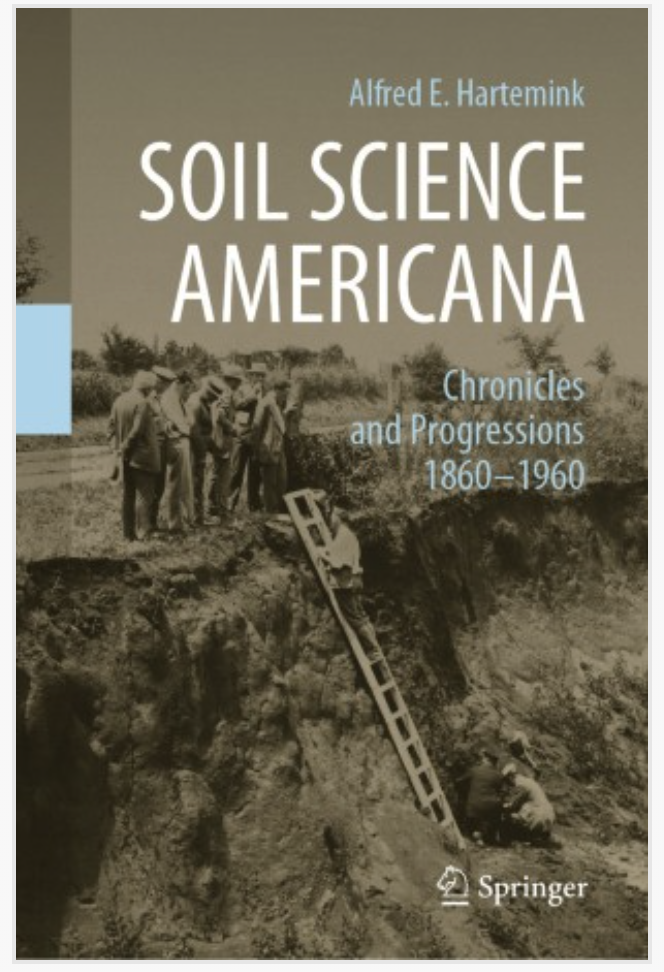New book by Alfred Hartemink describes how the study of soil became a science
Alfred Hartemink, professor and chair of the Department of Soil Science, recently published a new book titled “Soil Science Americana.” Published by Springer, the richly-illustrated book narrates how the study of the soil became a science, combining human history with scientific progressions.
 “[The book] has quite a bit on UW, CALS, and some of its leading soil scientists in it,” says Hartemink. “People who are featured include van Hise, King, Chamberlin, and extensively Truog, plus the agricultural program and the seventh International Congress of Soil Science that was held in Madison in 1960.”
“[The book] has quite a bit on UW, CALS, and some of its leading soil scientists in it,” says Hartemink. “People who are featured include van Hise, King, Chamberlin, and extensively Truog, plus the agricultural program and the seventh International Congress of Soil Science that was held in Madison in 1960.”
Below is a fuller description of the book, provided by Springer:
This book narrates how the study of the soil became a science and institutionalized in the USA between 1860 and 1960. The story meanders through the activities, ideas, publications, and correspondence of people who influenced the progressions, that led to the budding and early blossoming of American and international soil science. Interwoven is a tale of two farm boys who grew up 900 km apart in the Midwest USA in the late 1800s and early 1900s. Emil Truog and Charles Kellogg met in the late 1920s and shared a natural connection to the soil. Both were practical pioneers and believed that understanding soils was crucial to helping people on the land make a better living. The USA is a big country, its soil science is geographically intertwined, and the cradle of its history primes back to a few people.
Hartemink’s research focuses on novel ways to explore the soil profile, digital soil mapping and soil carbon in a range of ecosystems. He is the editor-in-chief of Geoderma Regional and the World Soils Book Series. With Jim Bockheim he wrote the book “The Soils of Wisconsin.”

